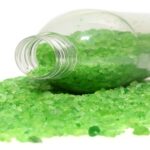Global Jojoba Oil Market
As stated in our extensive report; the Global Jojoba Oil Market accounted for USD 125.1 Million in the year 2022 and is projected to reach a value of USD 207.5 Million by 2030.
Due to its numerous advantages, including its anti-bacterial, antioxidant, and anti-ageing qualities, Jojoba Oil is increasingly being used in pharmaceutical and cosmetic products. This is a key reason fueling the market’s revenue growth. Vitamin E and vitamin B, as well as antioxidants and minerals like chromium, copper, and zinc, are all present in jojoba and all of these nourish and protect skin. Moreover, jojoba has a built-in natural antimicrobial effect that aids in preventing bacterial skin growth.
Jojoba Oil has anti-inflammatory properties that help to relieve chafing and chapping, reduce redness caused by dryness, treat eczema and rosacea symptoms, and keep skin calm and pleasant. Jojoba Oil is frequently used in skincare regimens as a therapy for acne, dry skin, and other skin conditions. Since Jojoba Oil contains humectants, it draws water to the top layer of skin to keep it hydrated, preventing bacterial infections, acne, and dandruff. Also, while not eliminating all bacterial and fungal species, Jojoba Oil destroys the bacteria and fungus that cause candida, E. coli infections, and salmonella. Thus, it is anticipated that these factors will play a key role in the market’s revenue growth.
Click To Get a Free Sample On the Research Study

In addition, palmitic and stearic acids, which are utilized to nourish and preserve hair, are naturally present in Jojoba Oil, which is another reason boosting market revenue growth. When massaged into the scalp, additional hydration helps to prevent dandruff or an itchy scalp. For instance, depending on the severity of dandruff, individuals could use Jojoba Oil as a pre-shampoo therapy or post-shampoo leave-in scalp conditioner. Additionally, the fatty acids in Jojoba Oil not only nourish hair but also prevent it from heat damage produced by styling equipment. This oil protects hair from free radicals, which in turn is also driving market revenue growth.
Key factors influencing Jojoba Oil Market Growth
The growth of the global Jojoba Oil market can be attributable to the following:
- The Market revenue growth is primarily being driven by rising consumer demand for cosmetics and personal care items made with natural ingredients.
- In 2021, the market for Jojoba Oil in the world was dominated by the cold-pressed segment in terms of revenue.
- Throughout the course of the forecast period, the refined segment in the worldwide Jojoba Oil is anticipated to have a relatively rapid revenue growth rate. Refined oils often cost less money and have a longer shelf life than unrefined oils.
- In terms of revenue, the worldwide Jojoba Oil in 2021 was dominated by the North American region. This is because more skincare products are being made with jojoba.
North America Region to Lead the Market
In 2022, North America held the largest revenue share, dominating the market. Growth in end-use sectors including the pharmaceutical, personal care, and cosmetics industries is to blame for this. Major cosmetics markets, including those in the United States, Canada, and Mexico, are all located in this area. Because it contains high-performance components including omega 3, triterpenoids, and tocopherols, the Jojoba Oil business in the United States is growing and gaining prominence. The anti-inflammatory and antibacterial properties of the human body are bolstered by these substances, which also aid in accelerating cell development.
A beneficial regulatory regime and technology advancements aimed at improving chemical and microbiological quality in the U.S. are expected to contribute to the market’s overall growth. For instance, the FDA (Food and Drug Administration) claims that the substance may be used to rejuvenate cells, diminish cellulite, and restore hair development. and handle varicose.
In recent years, Europe has played a significant role in biopharmaceutical research. Pharmaceutical businesses in the area, for instance, have produced effective bio-based medications for a number of disorders, including diabetes, high blood pressure, cancer, and cardiovascular disease, during the course of the previous ten years. Also, the legal framework in Europe for the selling of Jojoba Oil offers a promising future for the demand for the local product. Since that it has a relatively low hazardous level and is therefore protected by the New Food Rules, it may be imported into the European market without any restrictions. This is anticipated to increase regional product demand from the pharmaceutical industry.
Some of the largest markets for cosmetics and personal care products are located in Asia Pacific, including those in South Korea, Japan, India, and China. The Korean skincare and cosmetics market is well-established, highly fragmented, and competitive, with firms frequently spending in R&D to create new products. Due to the importance of beauty in South Korean society, customers there have very high expectations for and understanding of cosmetics goods. Companies that make cosmetics are therefore under pressure to provide goods that are both creative and high-quality.
Conclusion
Growing demand for Pharmaceutical, Cosmetics, Personal care and Industrial Usage augmenting the Jojoba Oil market sales.
Some of the key players in the Global Jojoba Oil Market include – Purcell Jojoba (U.S.), Inca Oil S (U.S.), Ecooi (India), ConnOils LLC (U.S.), Jojoba Naturals (U.S.), JD Jojoba Desert (U.S.), Hallsta (India), Nutrix International LLC (U.S.) and others.
![[Market Research Reports] – Research Google News Blog | VMR.Biz](https://www.vmr.biz/wp-content/uploads/2022/12/logo-removebg-preview.png)











